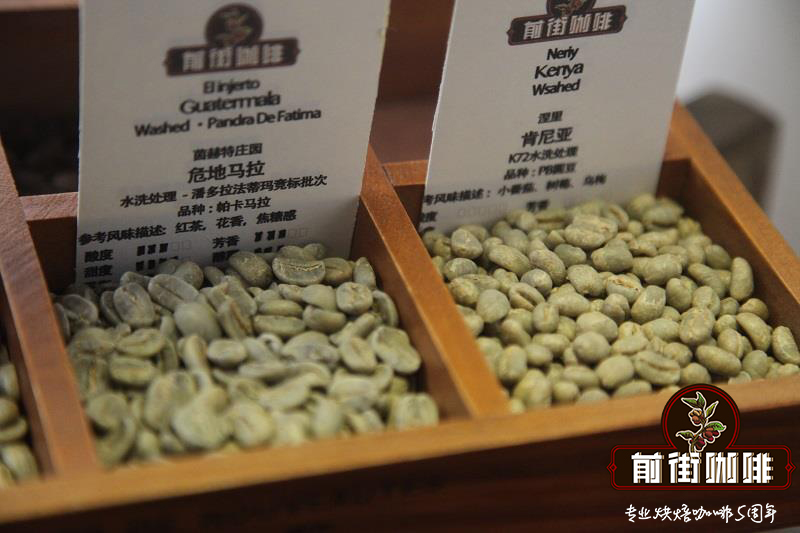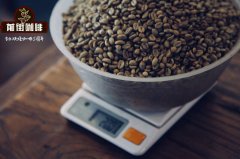Which coffee bean is the highest quality Arabica variety? How to choose Arabica coffee beans?

Professional coffee knowledge exchange more coffee bean information please follow the coffee workshop (Wechat official account cafe_style)
Arabica _ Arabica coffee beans _ Arabica and Robusta
Historians point out that coffee originated from Kaffa in Ethiopia, while the name coffee comes from the Arabic "Qahwah", which means plant drink. Later, coffee spread all over the world, using its birthplace "KAFFA" as its name, and it was not officially named "coffee" until the 18th century.
The classification of coffee trees is very complicated, and there are many species and varieties. There are three main kinds of coffee plants used as commercial coffee trees in the world: Coffea Arabica, Coffea Robusta and Coffea Liberica. Arabica Coffee is also known as Arabica Coffee, Robusta Coffee is also called Congolese Coffee, and Libia Coffee is also called Liberian Coffee. The country of origin of Liberia is Liberia, the planting method is less affected by rainfall and temperature, and has strong tolerance, but the quality is poor and the bitterness is strong, so it is not taken seriously, and the planting amount is the least (Cui Rongxia, 2016). Only the Arabica species (Arabica), which account for about 70% of the world coffee production, and the Robasta species (Robusta), which account for about 30%, are really of commercial value and have been planted in large quantities. There is a significant difference between Arabica and Robasta coffee beans (see Table 1). Arabica coffee has harsh planting conditions, weak disease resistance, higher altitude requirements, slower growth, higher quality, finer processing of raw beans, higher price, and more organic and private farm management (Xie Haiqing, 2004). The word Robusta has the meaning of "tenacity". The Robasta coffee tree has the characteristics of high temperature resistance, cold resistance, drought resistance, moisture resistance, pest resistance and so on. Unfortunately, the coffee beans produced are rich in caffeine and bitter, and do not have enough acidity. It is often used for instant caffeine, canned coffee, or brewed three-in-one coffee. But the price is cheap, mainly planted on a large scale by multinational enterprises (Cui Rongxia, 2016). The comparison between Arabica and Robasta coffee varieties is actually the comparison of quality (quality) and quantity (quantity). Arabica coffee represents "quality" and Robasta coffee represents "quantity".
Page 3
Table 1: comparative characteristics of Arabica and Robasta coffee bean varieties / Arabica (Arabica) Robasta (Robusta) Origin East Africa (Ethiopia) West Africa (Congo) Natural Environment Tropical High altitude Tropical Plains main producing areas, Brazil is the largest coffee producer in South America, Africa and Asia. Vietnam is the second largest coffee producer. The climate is mild, cool, warm and humid. The best growth temperature is 15-24 ℃ 24-30 ℃. The best rainfall is 1500-2000 mm 2000-3000 mm. The granules of non-heat-resistant / rainy beans are larger and smaller in size. The shape of long oval, flat oval, The dividing line of globular beans is S-shaped, the color of fruit is straight, yellow or red, dark red, caffeine 1.1-1.7%, 4.5-4.7%, it takes five years to harvest, it takes only two to three years for ripe fruit to fall and leave coffee beans on branches to harvest artificial concussion machine coffee tree yield is low. Most of the planting, organic planting, commercial planting, large-scale planting, mostly private farms, mostly multinational enterprises control special post-cooking characteristic acidity (BODY), average 1.2%, average 2.0%, good flavor (FLAVOR). Flavor and wine sour taste is poor, taste and flavor is less popular single or boutique coffee as mixed and instant coffee raw material price is relatively high, low output accounts for about 70% of the global market and about 30% of the global market.
Second, the climate of the origin of coffee beans is the decisive factor for the cultivation of coffee. Coffee beans can only be grown in the tropical areas between the Tropic of Cancer and the Tropic of Cancer, that is, the so-called "Coffee Zone" or "coffee belt". About 60 countries around the world produce raw coffee. One thing these regions have in common is the same temperature, annual rainfall, plenty of sunshine and fertile soil. Arabica coffee beans have commercial value through a well-managed environment, but the caffeine content varies from variety to variety and from place of origin, especially because of the fineness of harvesting (manual picking, picking only ripe fruit) and treatment (peeling and fermenting to remove pulp). It has different fragrant, sweet, sour, pure and bitter ingredients (see Table 2).
Page 4
The highest quality Arabica variety is characterized by rich flavors such as sweetness, sour taste and aroma. Among them, Jamaica's gourmet Blue Mountain Coffee (Blue Mountain) is rated as the highest grade, Colombia's Columbia Coffee (Colombia) is rated as the most standard quality, and Sumatra's Mandheling Coffee is rated as having a unique flavor (see Table 2). Table 2: main producing area and characteristic item of coffee bean trade name description: sweet glycolic acid bitter remark 1 Yamai plus the best blue mountain Blue Mountain is famous in the Blue Mountain at an elevation of 2256 meters, planted on a slope of 80-1500 meters, divided into No1., No2., No3. Strong, weak, strong and soft top grade 2 Brazil Santos Santos the world's largest producer. It is of excellent quality and is considered to be an indispensable bean when mixing. The type of quality is divided into No1. 、 No2 . Medium-strong, medium-weak blend 3 Columbia Colombia coffee beans are light green, large granules, sweet in acid, with heavy flavor, very suitable for single drink or mixed city. Strong, medium and weak standard quality 4 Ethiopian mocha Mocha coffee is of origin, small particles, dry type, turquoise, with special aroma and sour taste. It is classified as No1.- No8. Strong medium strong and soft special 5 Indonesia Java produces a small amount of Elaraby card original beans, small particles, sour quality beans, was once the best variety in the world. 6 Sumatra Mandheling manning produced in Sumatra is a very few Arabica species with large particles, but poor production management and baking quality will be reflected in beans and were once regarded as the best before the Blue Mountains appeared. Strong, medium-weak, medium-strong flavor is unique
Arabica coffee beans & Origin introduction how much is Arabica coffee per jin?
Important Notice :
前街咖啡 FrontStreet Coffee has moved to new addredd:
FrontStreet Coffee Address: 315,Donghua East Road,GuangZhou
Tel:020 38364473
- Prev

Coffee tips: what is the price of Arabica coffee beans in coffee producing areas
Professional coffee knowledge exchange more coffee bean information please follow the coffee workshop (Wechat official account cafe_style) Arabica _ Arabica coffee beans and Robusta coffee beans are made by roasting the seeds of the fruits of this plant. Coffee trees belong to the genus Coffea of the family Rubiaceae, a dicotyledonous family of angiosperms. There are about 70 species of coffee plants, of which two are
- Next

Espresso delicious Fine Coffee beans recommend Italian espresso extract powder than standard taste description
Professional coffee knowledge exchange more coffee bean information please follow the coffee workshop (Wechat official account cafe_style) espresso espresso _ espresso _ espresso which coffee beans are more suitable for espresso? I have a little bit about your question.
Related
- Beginners will see the "Coffee pull flower" guide!
- What is the difference between ice blog purified milk and ordinary milk coffee?
- Why is the Philippines the largest producer of crops in Liberia?
- For coffee extraction, should the fine powder be retained?
- How does extracted espresso fill pressed powder? How much strength does it take to press the powder?
- How to make jasmine cold extract coffee? Is the jasmine + latte good?
- Will this little toy really make the coffee taste better? How does Lily Drip affect coffee extraction?
- Will the action of slapping the filter cup also affect coffee extraction?
- What's the difference between powder-to-water ratio and powder-to-liquid ratio?
- What is the Ethiopian local species? What does it have to do with Heirloom native species?

